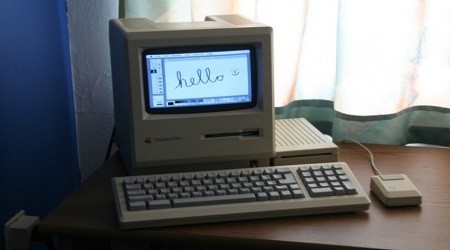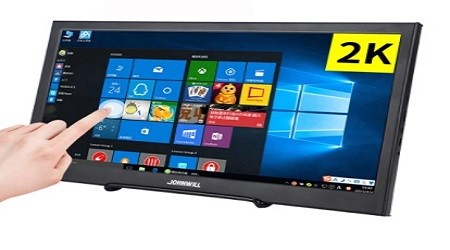The types of monitors that currently exist allow the user to consider which one is best for their needs. In this article, you will learn which are the essential monitors and their characteristics.
Table of Contents
Types of Monitors: Concept and Characteristics
Monitors are called peripheral output devices in the world of computing. They contain a screen that is part of the interface that allows the user to observe all the operations and activities carried out on a computer through images. Today’s monitors represent a way of appreciating the environment and processes that man needs in today’s world.
Monitors have different characteristics and powers; in this article, you will learn everything related to them. At present, they are part of the life and social environment of many people. The monitors maintain eye contact with the user and link ideas and thoughts with the computer.
There are different types of monitors that, little by little, have evolved in such a way; where a monitor nowadays can be used as a television, as a screen for a pc, also as an alternative device in advertisements. The versatility in which the creation of the monitors has been developed is very extensive.
Who Invented The Monitor?
The first Cathode Ray Monitor was invented by Carl Ferdinand Braun in 1897 when he invented the first Cathode Ray Tube Invent.
With the help of CRT, we were able to see a video on the screen. In 1942, the two men formed the first “Automatic Electronic Digital Computer” in the Atanasoff-Berry Computer in the United States. But there are different types of monitors in the world today.
History and Evolution Of Monitor
At the beginning of the 20th century, television technology began to emerge on the world market. In the front, it did not cause the impact that many expected. This technology was widely criticized, and specialists did not believe that it could go that far and did not give it many possibilities for development.
For the year 1923, the first black and white television appeared that little by little began to publicize itself. During the following two decades, its impact on the world market was impressive, increasing production and development throughout the world.

In the 1940s, the color TV monitor appeared, which made it possible to expand technology and advance the world of communication. From then on, the television revolution began to change the world and determine the advances in information.
Read Here About: Best Monitor Calibrator.
First Screens
Towards the 60s, television was consolidated; along with it, the best monitor or screen was also born, which was the television’s life. The emission of images from a distance allowed to create a way of seeing life very different from how it had been seen until now. Little by little, it evolved until it reached our days.

With the birth of computing, monitors took the reference of television technology to show on screen the processes that were done in computers. Then the first devices, called UDV, or Visual Presentation Unit, appear.
In 1964 the plasma screen was invented at the University of Illinois in the USA; It is based on a process where a small cell of phosphorus and special gases such as ions and neutral particles come into contact with a cathode. The connection generates a gas of three colors caused by the phosphor, allowing them to be manipulated to create different colors.
However, this technology did not see the light until the year 2000 when certain televisions appeared in some places—showing diversity in the resolution of images and definition of the projection.
80’s
These types of monitors had a built-in screen and keyboard connected to the developing computer equipment in the 1980s. They were two-color screens that showed only green text and black screen background.
The Apple Company, which was beginning to show the first computer equipment, released the CRT television monitor called Apple II on the market, especially in the early 1980s. It was used to participate in various video games.
The IBM company launched the first CRT for computer equipment in 1981. It was made up of three-piece equipment: the CRT monitor, the keyboard types, and the CPU. Although a bit rudimentary, these teams were separated by cables since the CPU was massive and could not be linked to the devices.
With the arrival of desktop PCs also launched by IBM, graphics adapters or CGA (Color Graphics Adapter) appear. These types monitors allow four colors to be displayed; they had a 320 x 200. In 1984 the same company developed a monitor that allowed up to 16 colors, with a resolution of 640 x 350 pixels.
The IBM company continued to develop and evolve the world of computing and computing. So in 1987, it launched the monitor called VGA (Video Graphics Adapter).
This monitor was adapted to a new PS / 2 model computer. These monitors allowed 256 colors and a screen resolution of 640 and 480 pixels. The monitor served as a reference for the computer industry’s development; today, they are part of the Components of a computer.
90s and Current Times
Starting this decade, the XGA and UXGA monitors appear, which revolutionized the display market. They had the power to emit more than 16 million colors, and the resolution reached up to 800 x 600 megapixels. These types of monitors had a very high definition that later evolved to the following display devices in various ways.
By the year 2000, the technology was advanced and began to create liquid screen monitors such as LDCs, which initially had a resolution of 1600 x1200 megapixels and the capacity to process more than 17 million colors. The human eye only can process 10 million colors.
At present, the movement and development of different monitors continue their process of evolution. They have even built flexible, transparent monitors that are used by computers; instead, they are structured to be used in different professional areas such as science, sports, and astronomy.
How Do They Work and What Are They For?
Different types of Monitors work today according to the characteristics and needs of the user. Most operate through a system of interconnection of microcircuits that are activated through various processes. They are addressed and activated with buttons located on the sides or in any other place of the same.
They can also be operated through remote controls if they are used as televisions. In computer monitors, the screens allow variety and management through commands found in the operating system. However, they also have interactive menus that can be operated by touching the screen.
These so-called touch monitors are the most used today, and the technology is even used in most smart mobile devices. The monitors are being used in various areas of social life. In medicine, in culture, cinema technology, in the aeronautical world, and every area of support or human development, they are a fundamental tool.
However, the use and operation are subject to a company’s operational needs, organization, or person. So in computing, they are part of an essential toolset. Together with the types of operating systems, they allow us to perform actions such as:
- Watch movies
- Read books
- Observe charts
- Prepare documents and observe the work step by step
- Check emails
- Connect to the internet and all social networks
- Develop works of architecture, design, and art through various programs that include graphic design and drawing.
- View photos
Various Monitors
Today various types of monitors are known, which are the ones that are used daily worldwide. Some more developed than others are part of the conglomerate of the styles of monitors in use. Their conformation is very different from one another.
Technologically they are differentiated by electronic processes that use various techniques such as liquid light, micro pixels, 2k monitor, monochrome parts. These monitors have given an essential evolution in technology and computing; let’s see the models.
Touch Monitor
They have had enormous growth in the last ten years. Touch technology allows mobile devices, tablets, computers, and various types of monitors to operate by tapping on the same. The essential operation is based on tapping the place on the monitor to activate. They were developed in the late 90s, and their boom came in the mid-2000s.

They are among the most innovative in recent years; They allowed replacing many actions performed on a physical keyboard. The touch monitor allows the user to enter the information into the system and, in turn, receives the result by that means by merely touching the screen.
It had its beginnings at the beginning of the year 2000 when used through a small pencil that activated the action by pressing the screen. Touch screens are placed inside LCD monitors. They are part of the technological development of recent years and are observed in almost all social activities.
From banks to large industry and sports companies, they use these devices. The monitors can be of several types: Resistive, capacitive and infrared; the difference between them is the definition of the resolution, the quality, and the resistance of the image. According to these characteristics, its price can be varied.
Digital Monitor
They are the monitors that evolved from the ’90s and can be classified into two groups: The VGA monitors, developed by IBM in the ’80s. They helped to present more transparent visual resolutions. A few years later, the SVGA monitors arrived; their English acronym is Super Video Graphics Array.
These monitors were born in the late 90s and made a difference in resolution matters. Its arrival on the market allowed us to appreciate well-defined images, where the resolution reached 800 x 600 megapixels.
LCD Monitor
English calls Liquid Crystal Display ( LCD ). They are monitors that have the peculiarity of working through a liquid crystal system. The advantage of these types of monitors is that they are very lightweight. LCD monitor confirmation is very thin, and they help to expand images with their technology in a more straightforward way.
The system works by reflecting light through a small glass. This messily receives the light and organizes it into tiny dots that come out in monochrome pixels.
They then allow forming a small beam of light that is transmitted to the outside. Each pixel is controlled by a microprocessor that controls the colors. The images on LCD screens are high definition and generate resolutions of 1080 pixels.
Today they are the most necessary for computer equipment; they consume little energy and take up very little space. These pc monitors invade the world market. Video consoles, calculators, cell phones, digital cameras maintain their structure through these types of screens.
LCD monitors are of the monochrome type that adapts to any device without the need to contain a device or spatial picture tube, as it happens with CRT monitors. The bulbs in an LCD monitor last approximately 30,000 hours to 50,000 hours.
LCD Types
The variety in the model is determined by the type of technology and operationality of the user’s needs; let’s see what those types of LCD monitors are:
- Guest Hosts, GH for its acronym, are displays containing the light-absorbing liquid crystal. This allows them to work with various colors. Its process depends on the type and level of the applied electric field.
- Twisted Nematic, TN are the ones you get on the cheapest LCD models. The liquid molecules work at 90-degree angles; in other words, the resolution process may vary when high-speed images are presented.
- Super Twisted Nematic, SNT is an evolution of the previous model and allows working with images that can quickly change the state. The movements of the molecules are improved, and it is not determined at certain angles. This process helps the image be appreciated by the user; it is sharp and has an excellent resolution.
Led Monitor
These types of monitors, called Light Emitting Diode in English, works through a diode that emits very intense light. Its general confirmation is made up of various polychromatic and monochromatic modules that, together as a group, allow the emission of high definition images that can be seen at long distances.
LED monitors are widely used today for various types of shows where massive shows are required. They can have thousands of mini LED bulbs that help create images that can only be seen from a safe distance.
Active LEDs
These models are made with small transistors in each of the pixels. They work through diodes and cathode tubes. These reflect the rays of light that later transform it into the image. In these monitors, the images are of high quality; their physical structure is made up of a kind of box at the back.
Passive LEDs
They are flat screens that, on the front and rear, use a technology similar to that of passive LEDs but with the difference in the formation of images with less definition.
Polychromatic Monitor
They are the monitors that process millions of colors and give a resolution image for large spaces. These components help to be part of the monitors that are used in stadiums and large events.
Monochromatic Monitor
These display devices are small monitors that display a single color image or beam of light. More than a monitor, it is a state-of-the-art technology that helps shape LED screens, and they serve as a complement to form a static image in the form of a group.
CRT Monitor
They were created to transmit images over long distances through Hertzian waves. With them, the television was born and allowed to start all the development of monitors globally. It works through the cathode tube system. Although technology has evolved, these monitors are still manufactured for other purposes.
Also, these monitors began developing television; in the beginning, the broadcasts on the screen were in black and white. On the other hand, it allows the reception of images that come from the computer. Your connection is made through a video port.
The form of emission is through a program source, which can be an antenna or a computer. Their emission is carried out for CRT color monitors by combining the primary colors (yellow, blue, and red). The number of components that are inside the monitor makes it very heavy.
The screen sizes could not be made more extensive due to these limitations—the bigger, the more decadent. In the beginning, it wasn’t easy to connect them to the computer systems and equipment of the 90s. It was not until the end of 2000 that the connection could be made.
OLED Monitor
It consists of these monitors that contain an organic type diode. Light is emitted through an electroluminescence layer. They are made up of various organic compounds that allow internal light to be cast inside the monitor, which emits the image outside the screen.
Unknown-8
Monitors with these characteristics were used for development and adaptation in computers. The system worked by sending the information from the computer equipment creating graphs through a trigger that sent electrons against a phosphor parent.
It received them by emitting a small colored light. This procedure allows you to reproduce different varieties of colors and, in turn, adjust different types of resolution. Its screen was curved, and its weight was considerable. They had a disadvantage; when the electric fields were executed, the screen vibrated, and the resolution had to be adjusted. Some even exploded.
TFT, Flat-Screen Monitor
The TFT monitors are a kind of variant of the LCD liquid screen. It uses a very thin film transistor as generation technology, hence its name in English, Thin Film Transistor, so it considerably improves the image.
Unlike traditional liquid screens, the TFT screen. It exposes a series of stressed or stressed pixels to the maximum level to maximize their luminescence. This pressure is carried out for one second. On large screens, this technology cannot be applied.
So TFT monitor types are used for small equipment and instruments. The connections to generate the image are considerable, which is another limiting element for large screens.
The problem arises when all the pixels in the same column receive an increased voltage pressure in a fraction of a second. However, this is controlled through a small switch-type device that regulates each pixel separately.
Plasma Screen Monitor
They are called FPDs, and they revolutionized the market when they appeared in sizes larger than 30 inches. Its name is because the system uses small cell technology composed of electrically charged ionized gases. Its predecessors were fluorescent lamps. The plasma screen’s characteristic is that it does not emit several pulsations while it emits the image.
The change in these pulsations comes when a signal is sent from the source, which could be a computer or channel change on the television, which represents less fatigue while looking at the screen. They are the direct rivals of the LCD and CRT monitors.
Produces brighter images and very high resolutions. They are perfect for modifying various image options such as brightness and contrast. They are also very light and take up little space. Its conformation allows to give them a lot of durabilities.
The contrast in the image makes the difference between the brightest and the darkest part. Generally, when the contrast is higher, it is also more realistic, unlike the other screens that when the brightness is increased, the image tends to be excessive and loses resolution.
Read Here About: Best Portable Monitor for MacBook Pro.

